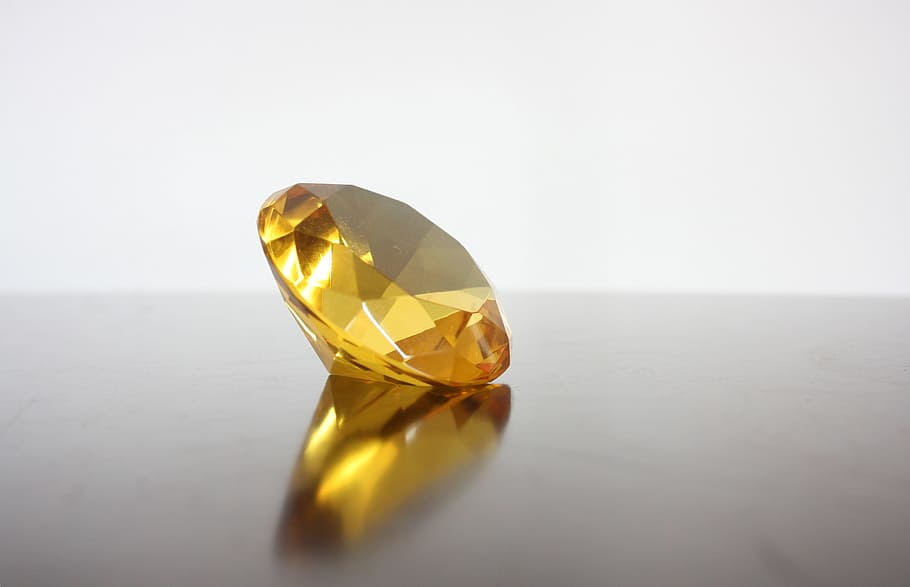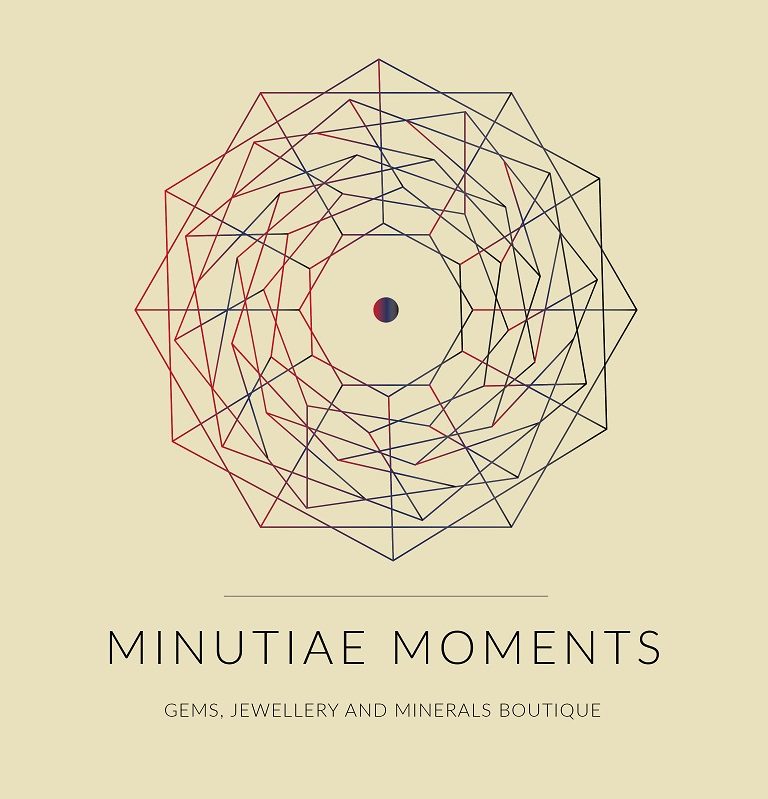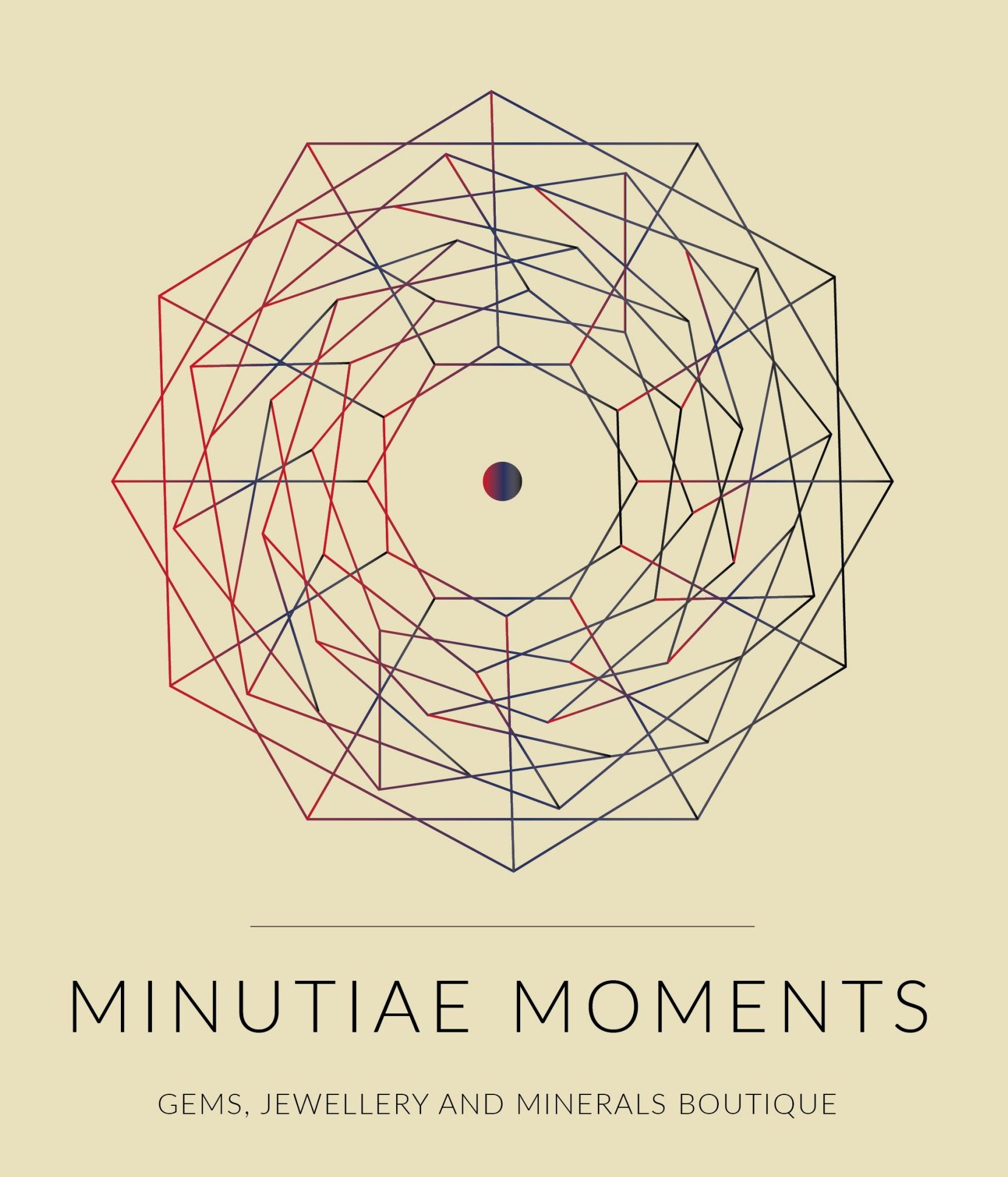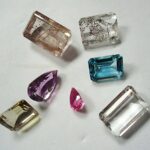
Yellow Gemstones List – My Top 8
If you are a fan of yellow color gemstones and searching for a list of different types, properties, advantage and disadvantages, you are in the right place. The purpose of this article is to come up with a yellow gemstones list with all the important information of each stone.
Yellow Gemstones List
Following yellow gemstones list is not created in any specific order. The list is followed by details of each gemstone and I will cover advantages and disadvantages of each different stone. Depending on those, you can select the best stone for your requirement.
• Yellow Diamond
• Yellow Sapphire
• Citrine
• Yellow Zircon
• Yellow Chrysoberyl
• Yellow Topaz
• Yellow Garnet
• Yellow Tourmaline
Let’s go through the details one by one.
1. Yellow Diamond
Diamonds are a rare type of gemstone and also one of the most expensive. Out of all the colored diamonds, yellow diamonds are the most common and affordable. Yellow diamond gets it color from the trace element “nitrogen”.
Diamonds are the hardest material on earth with a hardness of 10 in the Moh’s scale and therefore it is the ultimate scratch resistant material. But diamonds are not as tough as sapphire and it can chip or crack if faced with a hard knock.
There are different tones of yellow diamonds available and as per GIA classification, the highest ratings goes for the “fancy vivid” color diamonds.
Synthetic yellow diamonds are also available in the market and hence, buying from a highly trusted source such as Leibish is recommended.
You can check their yellow diamond prices here.
| Physical Properties | Advantages | Disadvantages |
|
Hardness – 10
Refractive Index – 2.417 – 2.419
(Refractive index is a measurement of the brilliance/luster of a gemstone) |
Diamonds are the most durable gemstone and also the gemstone with the highest luster.
Relatively easier to find compared to other colored diamonds.
|
Expensive
|
2. Yellow Sapphire
When the mineral corundum is mixed with a small amount of iron as the trace element, yellow sapphires are formed (You can learn about all other colors of sapphires and how those colors are formed in this article). Sapphires has a hardness of 9 in the Moh’s scale and a refractive index of 1.76 – 1.77.
Yellow sapphires comes in a range of yellow tones, from light yellow to bright yellow. Yellow sapphires are often treated to enhance the color.
Sapphires are also tougher than diamonds and will not easily chip or break when faced with the high force. High hardness, brilliance/luster and toughness makes yellow sapphire a perfect choice for a jewelry which you want to last for a long time.
Another major advantage of yellow sapphire is that, it is much less expensive than diamonds.
| Physical Properties | Advantages | Disadvantages |
|
Hardness – 9
Refractive Index – 1.76 – 1.77
|
A very unique and a rare gemstone.
High durability and high brilliance. |
It is an expensive gemstone
|
3. Citrine
Citrine is one of the most common yellow gemstones. It comes in different shades of yellow, from very light to very dark and brownish yellow. Citrine is the yellow variation of the mineral quartz and it has a hardness of 7 which is reasonably good compared to its low price. The name citrine comes from the French word “citron” for lemon.
Citrine is generally a clean stone and finding stones free of any inclusions is not a difficult task. It has a very good luster and sometimes it is used as an imposter for yellow sapphire as well. Heat treatments are very common for citrine and it is also widely accepted.
| Physical Properties | Advantages | Disadvantages |
|
Hardness – 7
Refractive Index – 1.54-1.55
(Refractive index is a measure of the brilliance or the luster of the stone) |
Readily Available
Affordable Prices
|
Most stones are heat treated.
|
4. Yellow Zircon
Zircon is a gemstone with a great brilliance since it has a very high refractive index. It is also used as an alternative for diamonds due its high luster. Yellow zircon comes in a range of yellow hues.
Zircon has a hardness of 7.5 which is considered as a fairly decent hardness for jewelry. However, it is a relatively brittle gemstone and can chip or crack.
| Physical Properties | Advantages | Disadvantages |
|
Hardness : 7.5
Refractive Index : 1.93 – 1.987 |
Prices are very affordable
Has a great brilliance |
Prone to chipping and cracking |
5. Yellow Chrysoberyl
Chrysoberyl belongs to the same family as cat’s eye and alexandrite. Yellow and brown are the common colors and green chrysoberyl are rare and expensive.
A very distinct advantage of chrysoberyl is that is has a hardness of 8.5 which is second only to diamond and sapphire in this list. It is also very tough and hence it is a great stone for jewelry.
Yellow chrysoberyl is commonly found and affordable even though it belongs to the same family as one of the rarest gemstones, alexandrite.
| Physical Properties | Advantages | Disadvantages |
|
Hardness : 8.5
Refractive Index : 1.744 – 1.755 |
A very durable gemstone
Prices are affordable
|
Not a popular gemstone
|
6. Yellow Topaz
Yellow topaz is another commonly available and an affordable gemstone. But the dark orange yellow topaz known as imperial topaz are rare and expensive.
Refractive index of topaz is 1.61 – 1.638 and hence it is definitely not as brilliant as diamonds. But it has a hardness of 8 which is higher than zircon.
Topaz has a cleavage and hence it is prone to chipping and cracking. Topaz can easily lose its luster due to dirt and cleaning the surface from a soft cloth often makes a clear difference.
| Physical Properties | Advantages | Disadvantages |
|
Hardness – 8
Refractive Index – 1.61 – 1.638
|
Very affordable prices
Good luster
High resistance to scratching |
Prone to chipping
|
7. Yellow Garnet
Even though red is the most popular color for garnet, it comes in a range of colors including purple, pink, orange, green and yellow.
Eye clean and transparent yellow garnet stones are easy to fine. Garnets are also mostly untreated. There are several variations of garnet and depending on the type, its hardness can vary from 6.5 to 7.5. Therefore, garnet is a moderately durable gemstone.
| Physical Properties | Advantages | Disadvantages |
|
Hardness – 6.5 – 7.5
Refractive Index – 1.738 – 1.745 |
Very affordable prices
Easy to find untreated stones.
|
Durability is moderate
|
8. Yellow Tourmaline
Tourmaline is a very popular gemstone which is also known as the “Rainbow Gemstone” as it can be found in almost every color. However, yellow tourmalines are one of the rarest in the tourmaline family.
With a hardness of 7 – 7.5, it has a good durability. Heat treatments are common for tourmalines and buying treated stones should not be that much of a concern.
| Physical Properties | Advantages | Disadvantages |
|
Hardness : 7 – 7.5
Refractive Index : 1.616 – 1.65
|
Durable
Prices are generally affordable
Has a good brilliance |
Some stones can be expensive based on factors such as color tone, clarity and weight.
|
Final Thoughts
The objective of this article was to make a yellow gemstones list which are suitable for different types of jewelry. I have highlighted the advantages and disadvantages of each gemstone which will make selecting one particular type easier.
p.s.
(The basic gemstone valuing criteria is the 4 c’s framework which I have covered for diamonds, sapphires and emeralds before. Either one of these articles will give you a basic understanding on the 4 c’s criteria for a gemstone if you are keen on learning more about it).
Note : If you are planning to buy gemstones or jewelry online, I recommend you to read this article for some important tips)



Thanks mate.